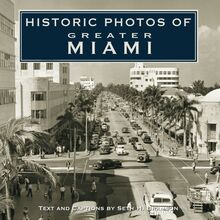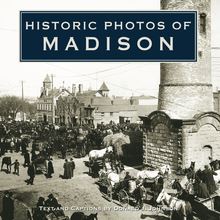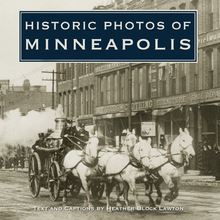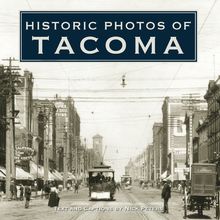Historic Photos of Minneapolis , livre ebook
122
pages
English
Ebooks
2007
Vous pourrez modifier la taille du texte de cet ouvrage
Obtenez un accès à la bibliothèque pour le consulter en ligne En savoir plus
Découvre YouScribe en t'inscrivant gratuitement
Découvre YouScribe en t'inscrivant gratuitement
122
pages
English
Ebooks
2007
Vous pourrez modifier la taille du texte de cet ouvrage
Obtenez un accès à la bibliothèque pour le consulter en ligne En savoir plus
Publié par
Date de parution
01 mars 2007
Nombre de lectures
0
EAN13
9781618586551
Langue
English
Poids de l'ouvrage
15 Mo
Publié par
Date de parution
01 mars 2007
Nombre de lectures
0
EAN13
9781618586551
Langue
English
Poids de l'ouvrage
15 Mo
HISTORIC PHOTOS OF
MINNEAPOLIS
T EXT AND C APTIONS BY H EATHER B LOCK L AWTON
Nashville, Tennessee Paducah, Kentucky
The Stone Arch Bridge, depicted here around 1900, spans the Mississippi just below St. Anthony Falls. The bridge provided the means for trains to reach the mill district. Built in 1882-1883 and financed by railroad magnate James J. Hill, the bridge stands 82 feet above the water below.
HISTORIC PHOTOS OF
MINNEAPOLIS
Turner Publishing Company
200 4th Avenue North Suite 950
Nashville, Tennessee 37219
(615) 255-2665
412 Broadway P.O. Box 3101
Paducah, Kentucky 42002-3101
(270) 443-0121
www.turnerpublishing.com
Historic Photos of Minneapolis
Copyright 2007 Turner Publishing Company
All rights reserved.
This book or any part thereof may not be reproduced or transmitted
in any form or by any means, electronic or mechanical, including photocopying, recording, or by any information storage and retrieval system, without permission in writing from the publisher.
Library of Congress Control Number: 2006937080
ISBN-13: 978-1-59652-328-9
ISBN: 1-59652-328-X
Printed in the United States of America
07 08 09 10 11 12 13 14 15-0 9 8 7 6 5 4 3 2 1
C ONTENTS
A CKNOWLEDGMENTS
P REFACE
R ISE OF THE M ILL C ITY (1850-1899)
M INNEAPOLIS E NTERS A N EW C ENTURY (1900-1920)
A C ITY OF C ONTRASTS (1921-1946)
M ODERN M INNEAPOLIS (1947-1970)
N OTES ON THE P HOTOGRAPHS
The Hotel Leamington, founded in 1912 and seen here in 1962, specialized in housing convention attendees. For decades the Minnesota Democratic-Farmer-Labor Party used the hotel as a home base while awaiting results on election nights. In 1990 the hotel was razed and the lot rebuilt as a parking ramp.
A CKNOWLEDGMENTS
Heather Block Lawton wishes to thank photographer Rachel McFarland for providing her headshot and John Lawton for countless hours spent proofreading and offering editorial advice. She also thanks Renee Willkom, Katie Weiblen, Marla Siegler, and Wendy Adamson.
This volume, Historic Photos of Minneapolis , is the result of the cooperation and efforts of many individuals and organizations.
It is with great thanks that we acknowledge the valuable contribution of the Minneapolis Public Library and the Minnesota Historical Society for their generous support. We would also like to thank Heather Block Lawton, our writer, for valuable contributions and assistance in making this work possible.
The goal in publishing this work is to provide broader access to a set of extraordinary photographs. The aim is to inspire, provide perspective, and evoke insight that might assist officials and citizens, who together are responsible for determining Minneapolis s future. In addition, the book seeks to preserve the past with respect and reverence.
With the exception of touching up imperfections caused by the vicissitudes of time and cropping where necessary, no other changes have been made. The focus and clarity of many images is limited to the technology of the day and the skill of the photographer who captured them.
We encourage readers to reflect as they explore Minneapolis, stroll along its streets, or wander its neighborhoods. It is the publisher s hope that in making use of this work, longtime residents will learn something new and that new residents will gain a perspective on where Minneapolis has been, so that each can contribute to its future.
- Todd Bottorff, Publisher
P REFACE
How does one tell the story of a city? Is it possible to say anything definitive about a place that is characterized by impermanence? Buildings rise and fall, the landscape is altered, and residents move on or pass away. The story itself is impossibly fragmented, scattered among dusty documents and residing in the individual memories of each person who has maintained a connection to the place. The act of weaving a coherent narrative from such a disjointed jumble of facts and impressions and recollections presents a daunting task.
Photographs are a valuable tool in the quest to understand the past. They permit us to visualize history, if only for one second in time, so that it might be studied. They are a tangible way to gain access to distant moments in time, and they possess a unique power to jog our collective memory. When grouped together, photographic images acquire a special potency and they allow the city to speak for itself. The information they transmit about the reality of place and time goes well beyond the scope of information that mere language can convey.
The photographs in this book are grouped into four chronological divisions. The first section, which covers the years 1850 to 1899, examines the explosive growth that characterized Minneapolis in the last half of the nineteenth century. The milling industry and the jobs it spawned drew both adventuresome spirits and workers desperate for a decent wage from the East Coast and from abroad. These settlers built the city in a startlingly short time. By the beginning of the twentieth century, Minneapolis had undergone a remarkable transformation from backwater military outpost and mission territory to leading American city.
The second section, spanning the years 1900 to 1920, chronicles the city s continued growth and dizzying rate of expansion. All the familiar trappings of modern urban life-streets and sidewalks, public transportation and department stores, parks and theaters-gained a firm foothold in Minneapolis during these two hectic decades.
During the third period of Minneapolis s history represented in this book s photographs, the years 1921 to 1946, the city lurched wildly between extremes. Like all American cities, Minneapolis found itself caught in the wake of economic and political forces far beyond local control. Minneapolis basked in the optimism and opulence of the 1920s, endured the depression and scarcity that characterized the 1930s, and finally benefited from the economic upswing ushered in by the Second World War.
The familiar theme of change played a major role in the final period addressed by this work. Between the close of World War II and the dawn of the 1970s, Minneapolis radically restructured its downtown and connected itself to the rest of the country via a complex network of highways and interstates. These changes altered both the physical and the social landscape of the city and set the stage for the city s continued development into the next century.
The first Hennepin Avenue suspension bridge, designed by the engineer Thomas M. Griffith and completed in 1855, connected Minneapolis to Nicollet Island.
R ISE OF THE M ILL C ITY (1850-1899)
In 1850 Colonel John H. Stevens built the first permanent settlement on the west bank of the Mississippi River where Minneapolis would soon emerge. By 1856 the newly incorporated Town of Minneapolis had witnessed the beginning of a dramatic era of growth. The population ballooned to nearly 2,000 at the end of 1857 and these new residents erected a total of almost five hundred new houses and businesses. In 1868 the town was formally upgraded to a city, and in 1872 Minneapolis subsumed its neighbor across the river, the City of St. Anthony. At the close of the nineteenth century Minneapolis claimed more than 200,000 residents and its population eclipsed that of its twin, the capital city of St. Paul. Within the space of five decades the once quiet frontier outpost became the nineteenth-largest city in the United States.
The word Minneapolis derives from the Dakota name for water, mine, and the Greek word for city, polis. It is an appropriate moniker for a city that owes its existence to the Mississippi River. Minneapolis rises at the site of the only significant waterfall to be found along the Mississippi s 2,200-mile course. This waterfall, St. Anthony Falls, powered the sawmilling industry that economically sustained Minneapolis during its early history. Millions of felled pine trees were floated down the river from the state s northern forests to Minneapolis, where they were cut into boards and subsequently sent by a rapidly expanding network of railroads throughout the Midwest. The mills provided employment for the thousands of new residents who flocked to the city during this period.
When Minnesota s northern forests were depleted, Minneapolis turned its attention from lumber to flour milling. Beginning in 1880 the power produced at St. Anthony Falls propelled the growth of companies such as Minneapolis Milling Company (later General Mills) and Pillsbury. Minneapolis was dubbed the Mill City and soon led the nation in flour production.
Minneapolis s growing population spurred the development of the city s infrastructure and social institutions. In 1857 five churches and a school were built to accommodate the city s residents. That same year Edward Murphy donated land for the city s first park. In 1871 Minneapolis s first hospital opened in a rented house, and in 1875 a horse-drawn streetcar system commenced operations along the ungraded and unpaved streets of Minneapolis.
First National Bank, which grew from a private bank that opened in 1857, became in 1864 the first bank in Minneapolis to receive a national charter. It occupied many locations throughout its long history including this site at the corner of Nicollet and Washington.
The first Hennepin County courthouse was erected in 1856 and occupied the corner of Fourth Street and Eighth Avenue South.
Thomas Lowry, founder of the Twin Cities Rapid Transit Company, persuaded the Minneapolis city council in 1875 to allow him to implement a street railroad. The earliest streetcars were ten feet long, served twelve passengers, and were pulled by horses or mules.
The Academy of Music opened on the third floor of this hall, located at the corner of Washington and Hennepin avenues, in 1872. Its first concert featured performances by two beloved local groups, the St. Paul Musical Society and the Harmonia Singing Society.
In 1878 Co














